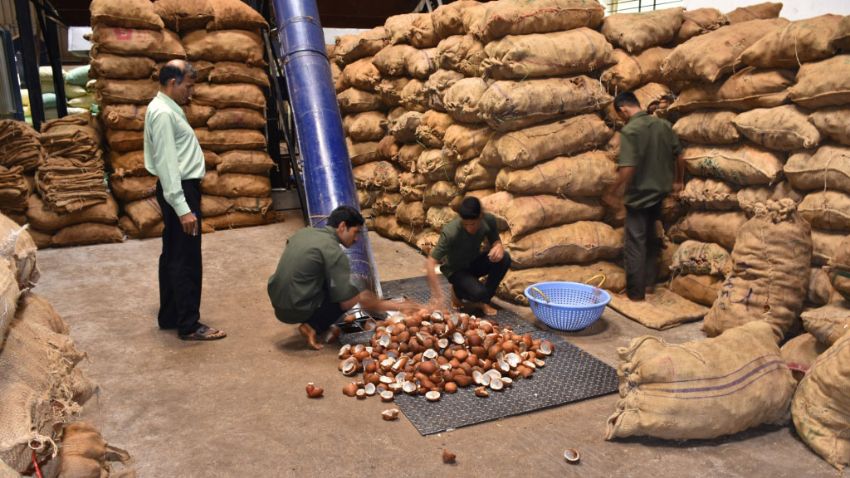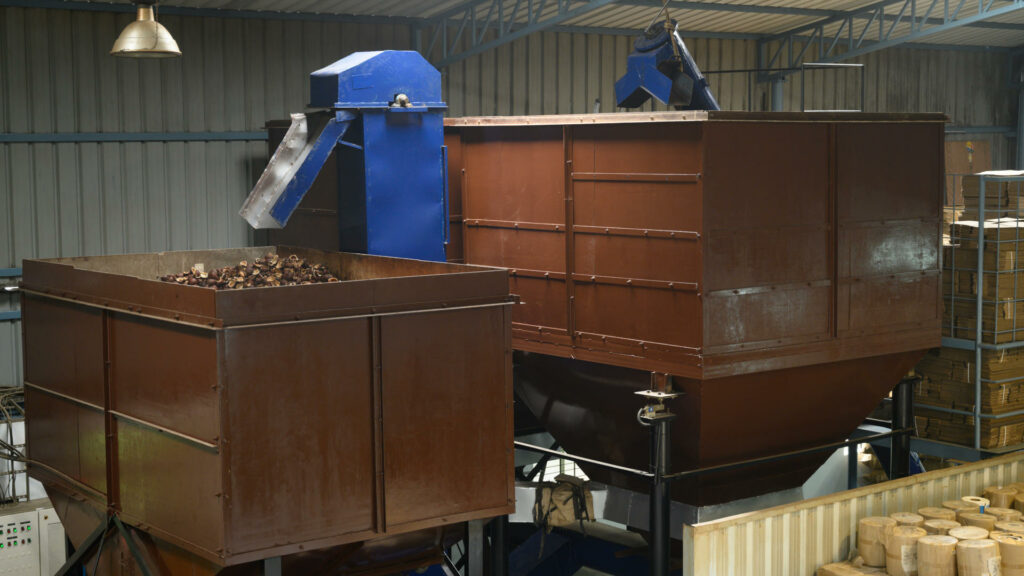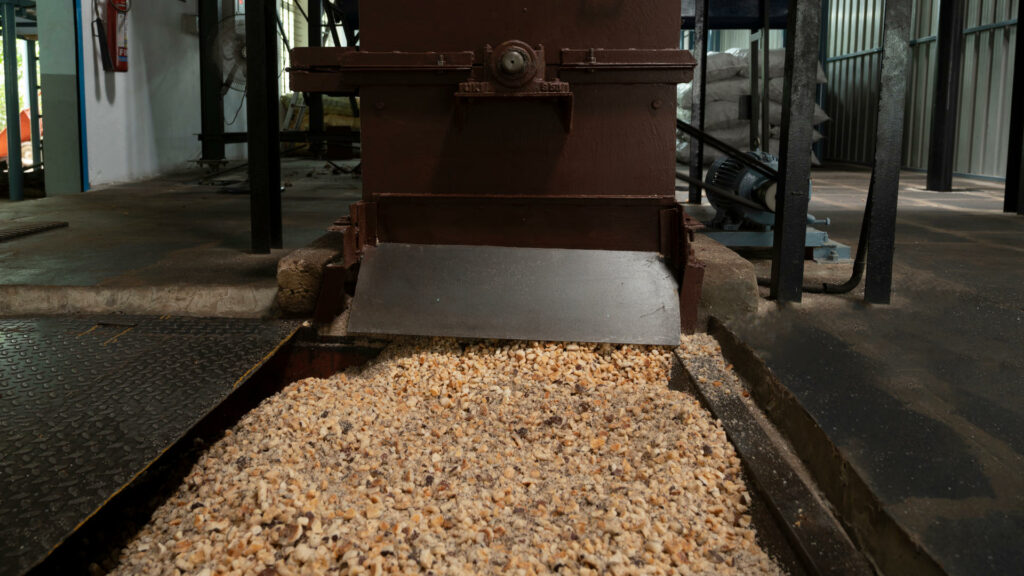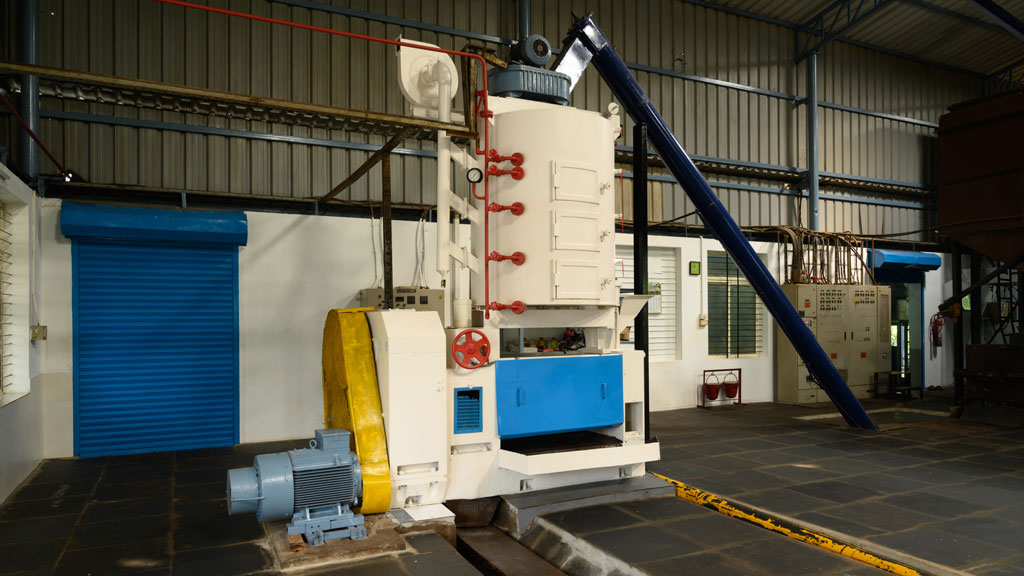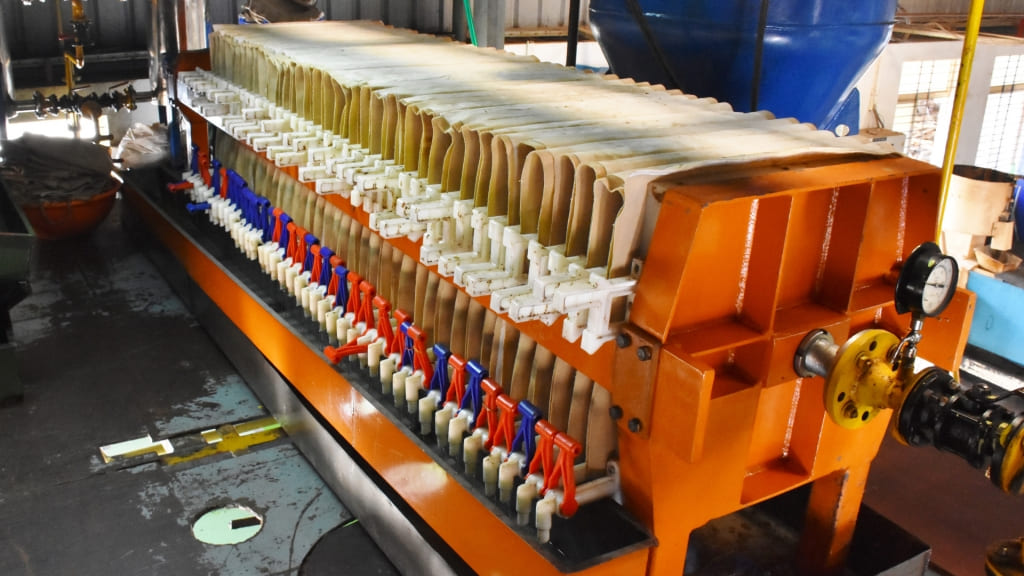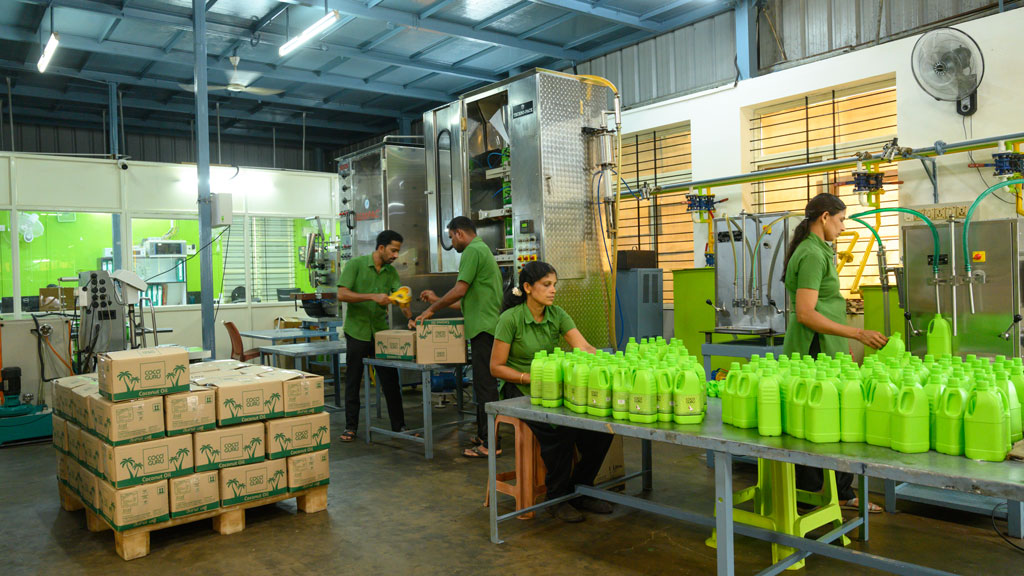Copra Purchase and Sorting
Raw Material purchased for coconut oil manufacturing is Milling grade copra. Only copra made by sun-drying coconut is purchased from the coastal areas or copra manufacturers in Kangeyam, Tamil Nadu. It comes with an FFA of 0.5% and moisture of around 5%. It is a cup in shape; the inner surface is white in colour, and the outer surface is brown/black. It comes packed in gunny bags of 50 kg each. It is visually inspected, and impurities are removed. Impurities commonly found are coconut shell, kout (bad quality copra) and plastic/jute threads.
Copra Drying
Selected copra is loaded into a hopper with a capacity of 9 tons. The hopper has a mesh at the bottom to allow air inside but prevent copra from falling. The hot air of about 75-80 degrees is generated using an air heater and pumped into a hopper using a centrifugal blower. Hot air is supplied continuously for about 10 hours. Moisture level reduces from initial 5% to 2.5%. After drying, the copra becomes hard and brittle. Moisture, when present in oil, causes rancidity, so when moisture is removed, the shelf life of oil increases. Oil extracted from moisture-free copra can be finely filtered, too.
Copra Cutting
Milling Copra comes in half-ball shapes and other irregular shapes. This is not ideal for handling and processing. So it is cut into small pieces of about 1 inch in size. A Copra Cutter driven by a motor does this. The beaters cut the copra into pieces, and when the pieces become smaller than the desired size, they escape through the mesh. Cutting copra into uniform-sized pieces is important for uniform roasting later. These copra pieces are carried out through a Screw Conveyor.
Copra Roasting/Cooking
Copra pieces are then roasted for about 1 hour in a steam-jacketed vessel with continuous agitation. A bit of steam is also sprayed into copra for better cooking. Steam is generated using an Indian Boiler Regulation (IBR) standard steam boiler fired with solid waste. Steam is supplied safely and efficiently with an IBR-quality seamless steam pipeline. Cooking helps in better oil recovery, provides a sweet aroma and improves the shelf life of coconut oil. Heating also sterilises copra.
Copra Crushing/Oil Extraction
Dried and Roasted Copra pieces are now fed into an expeller with a screw press for mechanical crushing under high pressure. Oil squeezes out of copra during this process, leaving the fibre out. Crushing is employed in 2 stages, where 1st crushed copra is again crushed for the 2nd time to recover maximum oil. The left-out Oil cake will still have 8% oil. Extracting oil beyond this level is not economical with mechanical crushing. The solvent extraction method will have to be employed beyond this stage.
Copra contains approximately 63% oil. 5% is lost as moisture during the process, and the remaining 32% is oil cake. Oil is taken for further processing, like filtering and packing. Oil cake is packed in gunny bags and sold to solvent extractors or cattle feed manufacturers.
Coconut Oil Filtering
Oil extracted through an expeller will have about 8% sediments/feet. These are separated from oil through a three-stage filtering process: coarse filtering by Vibrating Screen, Main filtering through the Filter Press, and Fine filtering through the Filter Press.
Vibrating Screen—Heavy sediments are separated by simple vibration of a mesh aided by a vibrating motor. This is the simplest and cheapest method of filtration. It relieves the further filtering stages of many sediments and hence improves efficiencies there.
Filter Press – The filter press consists of plates and filter cloths. Oil is passed a pressure using a screw pump. Oil passes through the finely poured filter cloths. Sediments and moisture remain in the filter cloth in between the plates. Oil cake and sediments are separated by removing the plates.
Main filtering
Hot oil at about 70 degrees is used for fast filtering through the first filter press.
Fine filtering
Filtered oil is cooled through a plate heat exchanger to cool it to room temperature using water. This oil is again filtered slowly through the second filter press to remove wax, moisture, and any further sediments to get clear oil

